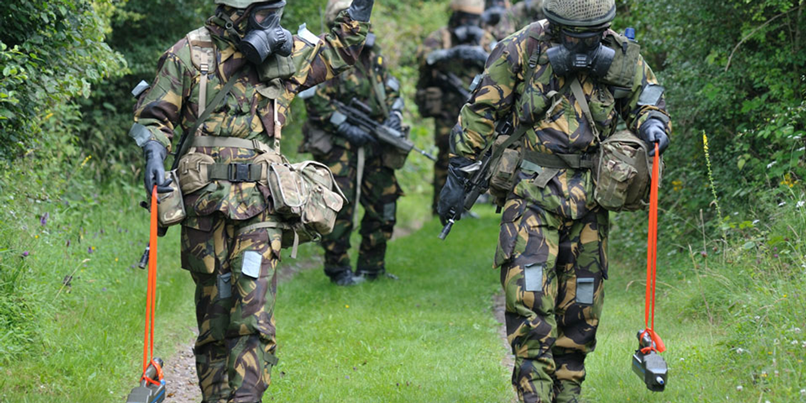 The threat of CBRN (chemical, biological, radiological and nuclear) incidents is a very real one. Whether malicious and intentional - such as in the context of warfare or a terrorist attack - or accidental - such as a spill or leakage - the consequences of CBRN incidents can be incredibly destructive.
The threat of CBRN (chemical, biological, radiological and nuclear) incidents is a very real one. Whether malicious and intentional - such as in the context of warfare or a terrorist attack - or accidental - such as a spill or leakage - the consequences of CBRN incidents can be incredibly destructive.
Therefore, it is vital that those individuals who would be on the front line if the worst were to happen (namely, the military and emergency services staff) are well-equipped to respond to and mitigate the fallout.
Traditionally, CBRN training has been carried out using live agents or simulant agents – and this continues to be the case. More recently, technology has enabled training to be undertaken using simulation. Both approaches have their advantages and drawbacks.
Here, we will explore how they measure up against one another.
Traditional methods
Live agent training (LAT) and simulant agent training (SAT) both involve the release of chemical, biological, radiological or nuclear materials into the training environment. With LAT, real materials are used; with SAT, materials that replicate the properties of those materials are used.
1. LAT
LAT is the most realistic training method – after all, real materials are being employed. It is the closest an individual can get to dealing with a CBRN incident out in the field and, therefore, it is the zenith of CBRN training. LAT takes place in controlled, allocated areas, which are generally situated within the confines of military or government establishments.
While this method equips trainees with invaluable knowledge and skills, it must be stringently monitored and this means that training scenarios are limited. Using live agents means taking into account both environmental and health and safety legislation and, consequently, highly-trained staff must be on-site to oversee training exercises.
LAT is also expensive to implement – for example, training at the VysKov LAT facility in the Czech Republic currently costs €2-3,000 per person (with 15 people attending each course), with additional charges for the instructional staff attendance.
2. SAT
SAT is one step down the ladder from LAT but, nevertheless, realistic, as real detectors are still used. It is not a replacement for LAT; rather, it serves as a precursor, providing students with the opportunity to get to grips with the detectors, before they move onto the next stage of training.
The most obvious benefit of SAT is that the dangers associated with LAT are reduced, as real agents are not being used. This provides more scope for training scenarios. However, simulant agents are not completely harmless and, over time, they can still have an impact on the environment into which they are released.
Furthermore, it can be difficult for trainees to suspend their disbelief during SAT – they know the agents being used pose no real threat and this can remove the sense of immediacy and danger inherent in LAT.
Like LAT, SAT is expensive, with the cost of chemical simulant kits varying between £300 and £2,300.
Simulation training
Simulation training is powered by technology, utilising computer-based simulation tools, which exactly replicate real detectors. These simulators are used to "detect" simulation sources, which mimic live agents. Like SAT, simulation training is not a replacement for LAT.
Simulation training has two main benefits: there are no environmental or health and safety regulations to adhere to; and, consequently, a wide range of training scenarios can be set up.
On the other hand, as with SAT, students are well aware that they are training in a "safe" environment. Additionally, creating an artificial hazard environment requires a much greater depth of understanding and knowledge, which can be a challenge for newly-qualified instructors.
Both traditional methods and simulation have their place in CBRN training. LAT is indispensable – it prepares students in a way that SAT and simulation training simply cannot. However, it should not stand alone as a training method; rather, when students undertake LAT, they should already have significant CBRN training experience.
Therefore, when we talk about traditional methods vs. simulation, we are really talking about SAT vs. simulation training. As can be seen, both methods have their benefits and downsides. Therefore, choosing a training method comes down to the particular requirements of the individuals involved.
To find out more about LAT, SAT and simulation training, why not download our eBook below.






